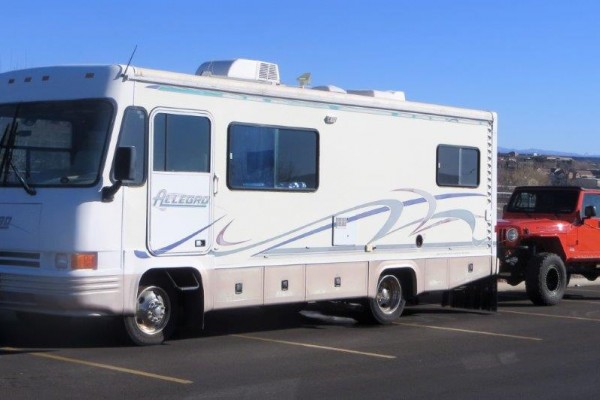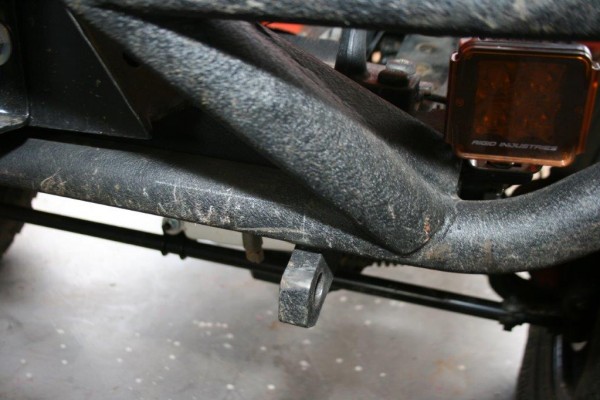It’s time to hit the highway for a little summer adventure.
Our getaways often include four-wheeling on new and distant trails, and that means towing our Jeep behind a motorhome or some other tow vehicle. When it comes to choosing a towing method, you’ve got a few choices: flatbed trailers ($2,500+), tow dollies ($1,000+), and tow bars ($125). Obviously, the prices are approximates, but close.
Let’s look at the pros and cons of the three types of towing.
Trailers
Trailers are considered the best way to transport your Jeep but they are also the most expensive.
Pros:
- No wear and tear on your Jeep
- Trailer brakes
- Capable of backing up
Cons:
- Price
- Storage
- Five additional tires
Tow Dollies
Tow dollies can be used if one of your axles cannot remain on the ground while the vehicle is being towed recreationally.
Pros:
- No wear and tear on one axle
- Possibility of trailer brakes
Cons:
- Price
- Storage
- Incapable of backing up
- Two additional tires
- Can be unsafe
Tow Bars
Flat towing with a properly mounted tow bar is almost as safe as trailering your rig, and far superior to using a tow dolly.
Pros:
- Price
- Possibility of supplemental braking systems
- Storage
Cons:
- Incapable of backing up
A Curt adjustable tow bar will allow you to tow up to 5,000 pounds. It is a black powdercoated steel tow bar with a 2-inch heavy-duty coupler, bolt-on bumper brackets, and mounting hardware. It is adjustable from 26 inches to 41 inches. Some vehicles—such as our Jeep—may require custom bracket fabrication. And many recent model Jeeps are factory-equipped with soft, collapsible bumpers to meet safety requirements. These Jeeps will need a base plate-type tow bar; however, all those Jeeps with aftermarket steel bumpers will accept this tow bar.
In addition to the tow bar you’ll need a pair of safety cables. We chose a set of Curt safety cables that are designed to give maximum security and peace of mind when towing. These cables are self-coiling to keep them from dragging when towing. Each cable is coated for safety and to help prevent rusting and fraying. They are 42 inches in length with spring-loaded steel safety latches that keep the hooks in place. We use the D-rings in the Rugged Ridge tubular bumper on the Jeep side and the receiver’s attachment points on the motorhome side.
When attaching the safety cables, cross the cables beneath the tow bar. This does two things; they tend to support the tow bar should it become disconnected from the ball. Secondly, it will control the Jeep better, keeping it behind the motorhome if the tow bar becomes disconnected. Without crossing the safety cables—attaching them in parallel—the Jeep will wander all over the place with a disconnected tow bar, plus the bar could very likely come into contact with the pavement at speed, which could flip the Jeep.
One last thing is needed for flat towing: a set of taillights. You can use the Jeep’s own taillights for towing behind a pickup or motorhome if you know how to wire the trailer plugs and use diodes. Diodes are one-way circuit protectors that allow electrical power to flow in only one direction. In order to use brake lights as turn signals as well as brake lights, they must be separated by either diodes or a switch that breaks the circuit. If you use a switch, you could forget to reset it when driving the Jeep so diodes are safer, but require more electrical knowledge. Or….
You can use a set of magnetic taillights, which is what we did. A Grote Industries LED towing light kit is all inclusive with two magnetic lights, cable, and four-way connector. Simply plug them in—you’ll need an adapter to match any trailer electrical outlet other than a flat-four—route the cable to the rear of your Jeep, and allow the lights to lock themselves to the rear bumper with their magnetic stands, and you’re ready to roll.
Follow along as we install our Curt adjustable tow bar on our motorhome:














Tow dollies can be backed up. Just have to be careful.
Towing bars are great for many of the reasons listed above. However, it is imperative that they be safely installed as accidents are known to occur. As a seller and installer of tow bars I recommend doing some research before you hire just anyone to take the job.
It’s nice that installing a tow bars are rather inexpensive. My friend moves a lot, so she could benefit from installing a tow bar. Thanks for pointing out the pros and cons of different towing methods.
Have used this Blue Ox tow bar to tow my 2016 Chevrolet Malibu LX all over the United States. Absolutely no issues. The slider latches are occasionally impossible to release if the towed vehicle is angled anyway. This issue has since been alleviated by a design change in the Blue Ox Alpha II towbar (BX7380).